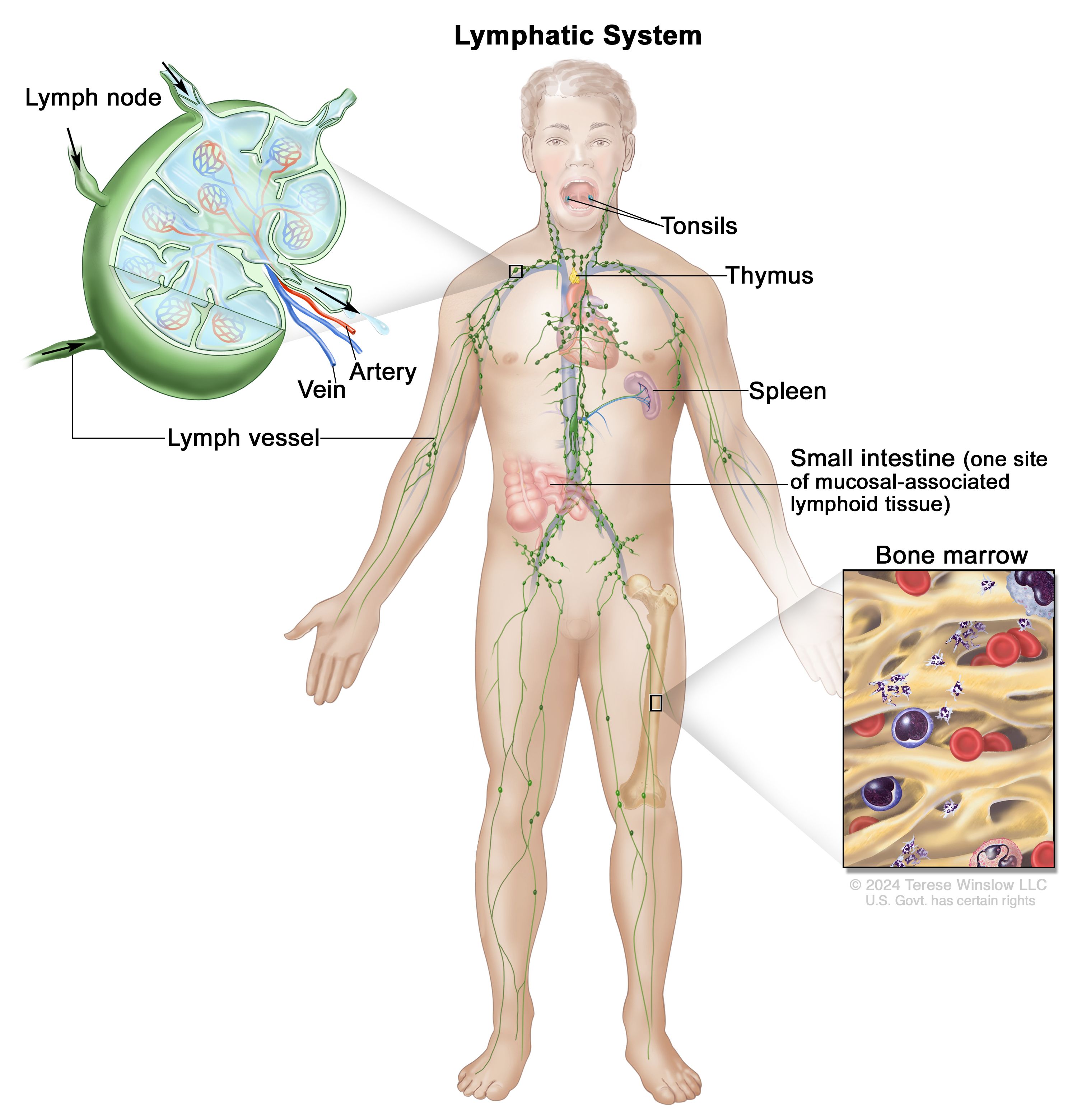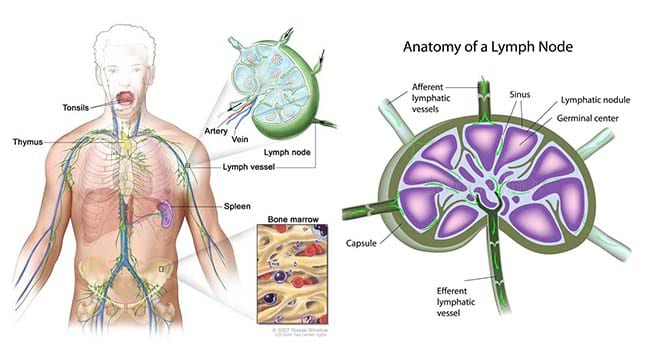Describe the Function of Lymph Nodes
Lymph nodes are a central part. Peripheral Circulation Questions Please utilize the textbook to complete this assignment 1.

Lymph Glands And Lymphatic Vessels Of Head And Neck Google Search Lymph Glands Lymphatic Lymph Nodes
The lymphatic system consists of the lymph nodes spleen thymus as well as the lymphatic tissue found in the small intestine Peyers patches and throat adenoid tonsils palatine tubal tonsils It is a part of your immune system It has many functions It can protect your body from illness-causing invaders maintain body fluid levels absorb digestive tract fats.

. Describe the function of serum plasma lymph lymph nodes granulocytes and agranulocytes with emphasis on their role in resistance. Lymph is drained and collected from the adjoining parts of the lymph nodes. To detect and eliminate foreign substances from the body.
Act as a defense system removing unwanted or foreign material from the lymph fluid before it enters the general circulation Thymus Gland. It keeps the body cells moist. Name the organs that are part of the lymphatic system.
They are part of the bodys immune system and filter lymph fluid which is composed of fluid and waste products from body tissues. B cells produce antibodies. Describe the function of the lymph nodes.
Name the organs that are part of the lymphatic system. Order a similar paper and get 15 discount on your first order with us Use the following coupon FIRST15 Order Now. A few major functions of lymph are mentioned below.
Describe the function of lymph nodes and explain the technique approach when assessing lymph nodes. The lymphoide tissues in the nodes break down materials which have been. Place an order in 3 easy steps.
Filtering of the lymph helps in removal of particles not normally found in the serum. Lymph Collection and Filtration. Here are the major functions of lymph nodes.
There are about 600 lymph nodes in the body. Describe the function of the lymph nodes. Lymph nodes or lymph glands are small lumps of tissue that contain white blood cells which fight infection.
Name the organs that are part of the lymphatic system. Plays a critical role as part of the immunity mechanism against infections. Functions of Lymph Nodes The primary role of the lymph node is to filter the lymph and then produce an immune response against trapped.
As already mentioned lymph nodes are essential organs of the immune system and play a crucial role in the normal functioning of the system. In order to do this lymph nodes contain lymphocytes a type of white blood cell which includes B cells and T cells. It transports antibodies and lymphocytes.
The lymph that is filtered is then returned to the blood to prevent edema or the excess fluid buildup in the tissues. What is the scale that is used to grade the strength of the pulses. These circulate through the bloodstream and enter and reside in lymph nodes.
Everyone has an extensive lymphatic system in their body which consists of lymph nodes and lymph vessels. Takes less than 5 mins. Describe the function of the lymph nodes.
Lymph contains cell wastes like cancer cells bacteria and viruses. It transports oxygen hormones and nutrients to different parts of the body and removes metabolic waste from the cells. Answer 18 The lymph nodes function as filter - the lymph so that it can identify and fight infections.
The lymphatic system plays a key role in the immune system fluid balance and absorption of fats and fat-soluble nutrients. Therefore the immune system carries out detailed surveillance of the blood in order to detect these pathogens. The lymph vessels carry a clear fluid called lymph that is collected from tissues throughout the body.
If the nodes ducts vessels or lymphatic tissues become blocked infected inflamed or cancerous then the lymphatic system can stop working properly. Lymph nodes are composed of masses of lymphocytes and other cells which serve the function in humans of fighting off foreign bodies including bacteria and viruses. Lymph nodes LN are one of the important sites in the body where immune responses to pathogenic antigens are initiated.
Functions of lymph nodes. Describe the general location histological structure and functions of lymph nodes. Describe the function of the lymph nodes.
List the risk factors for venous stasis. Filter out the bad stuff- remove and destroy microorganisms and remove debris from the lymph so all the bad is filtered out before returning to the bloodstream. The vessels gather the clear watery fluid lymph from the tissue spaces into the circulation.
Definition and Function of Lymph Nodes in the Body. To clarify the general function of LN to identify cell populations within the lymphatic system and to describe the regeneration of. For this the lymph node contains lymphocytes that is.
Drainage of fluid from blood stream into the tissues The circulating blood through narrow vessels leads to leakage of fluid or plasma into the. Get your college paper done by experts. The primary function of lymph nodes is the filtering of lymph to identify and fight infection.
List the pulses accessible to examination. Lymph node histological slide The presence of foreign organisms within the blood stream can trigger a massive cascade of events that will disrupt many homeostatic microenvironments within the body. Describe the function of serum plasma lymph lymph nodes granulocytes and agranulocytes with emphasis on their role in resistance.
Functions of the lymphatic system include 3. This immunological function induced by cells within the LN is an extensive area of research. Functions of Lymph Nodes.

The Lymphatic System Consists Of Lymph Lymph Nodes And Vessels Collecting Ducts Spleen Thymus Tonsils And Adenoid Lymphatic System Immune System Lymphatic

Lymph Nodes Structure And Functions

Definition Of Lymph Node Nci Dictionary Of Cancer Terms National Cancer Institute
Comments
Post a Comment